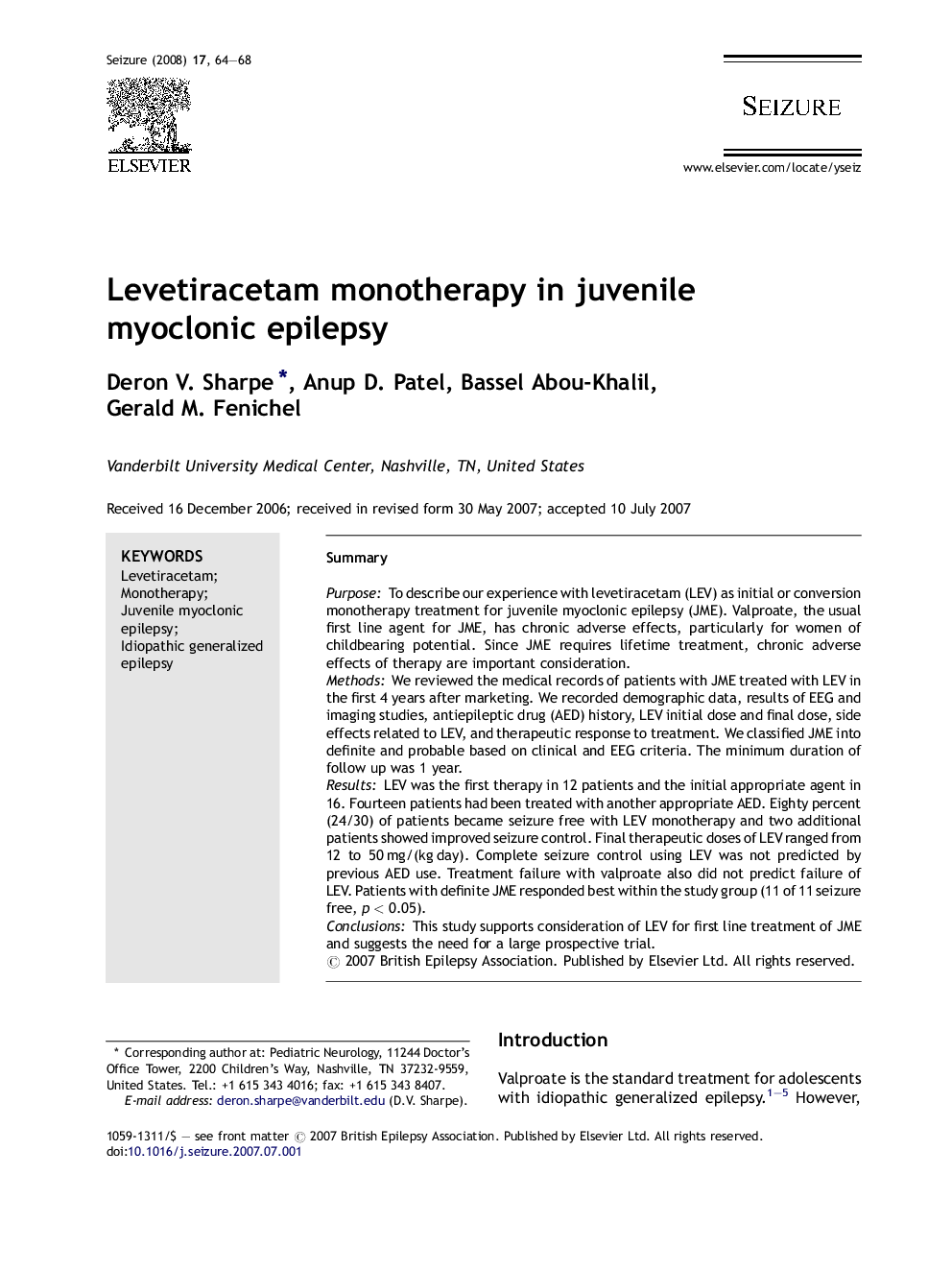| Article ID | Journal | Published Year | Pages | File Type |
|---|---|---|---|---|
| 340850 | Seizure | 2008 | 5 Pages |
SummaryPurposeTo describe our experience with levetiracetam (LEV) as initial or conversion monotherapy treatment for juvenile myoclonic epilepsy (JME). Valproate, the usual first line agent for JME, has chronic adverse effects, particularly for women of childbearing potential. Since JME requires lifetime treatment, chronic adverse effects of therapy are important consideration.MethodsWe reviewed the medical records of patients with JME treated with LEV in the first 4 years after marketing. We recorded demographic data, results of EEG and imaging studies, antiepileptic drug (AED) history, LEV initial dose and final dose, side effects related to LEV, and therapeutic response to treatment. We classified JME into definite and probable based on clinical and EEG criteria. The minimum duration of follow up was 1 year.ResultsLEV was the first therapy in 12 patients and the initial appropriate agent in 16. Fourteen patients had been treated with another appropriate AED. Eighty percent (24/30) of patients became seizure free with LEV monotherapy and two additional patients showed improved seizure control. Final therapeutic doses of LEV ranged from 12 to 50 mg/(kg day). Complete seizure control using LEV was not predicted by previous AED use. Treatment failure with valproate also did not predict failure of LEV. Patients with definite JME responded best within the study group (11 of 11 seizure free, p < 0.05).ConclusionsThis study supports consideration of LEV for first line treatment of JME and suggests the need for a large prospective trial.
